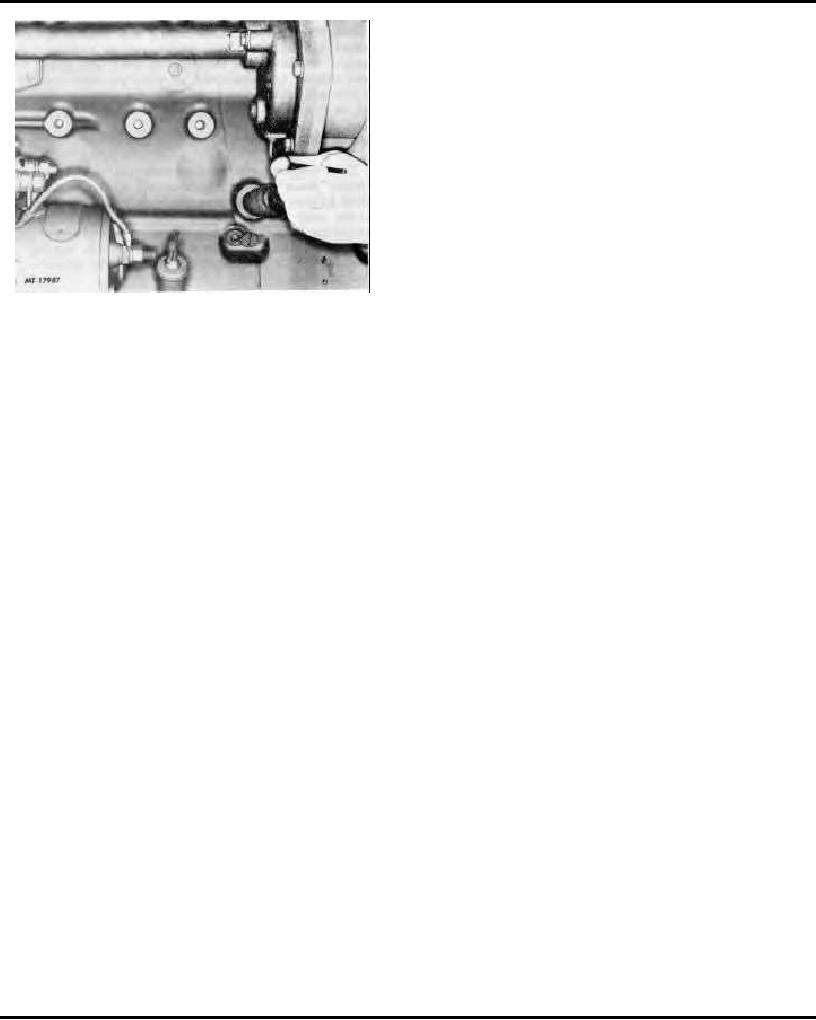
OPERATION
electric shut-down valve, or by turning the manual shut-
down valve knob. Turning off the switch key which
controls the electric shut-down valve always stops the
engine unless override button on shut-down valve has
been locked in open position. If manual override on
electric shut-down valve is being used, turn button full
counterclockwise to stop engine. Refer to "Normal
Starting Procedure," Page 1-2.
Valve cannot be
reopened by switch key until after engine comes to
complete stop.
CAUTION:
NEVER LEAVE SWITCH KEY OR
OVERRIDE BUTTON IN VALVE OPEN OR IN RUN
POSITION WHEN ENGINE IS NOT RUNNING. WITH
OVERHEAD TANKS THIS WOULD ALLOW FUEL TO
DRAIN INTO CYLINDERS, CAUSING HYDRAULIC
LOCK.
ENGINE SHUT-DOWN
DO NOT USE THE COMPRESSION RELEASE LEVER
IDLE ENGINE A FEW MINUTES BEFORE SHUT-
TO STOP THE ENGINE
DOWN
Some engines are equipped with a compression
It is important to idle an engine 3 to 5 minutes before
release lever. Pulling this lever lifts the intake or exhaust
shutting it down to allow lubricating oil and water to carry
(depending on engine model) valve push tubes and
heat away from the combustion chamber, bearings,
opens the valves. The push tubes are lifted off their
shafts, etc.
This is especially important with
sockets and extensive wear on the balls and sockets will
turbocharged engines.
result from using the compression release to stop the
engine.
The turbocharger contains bearings and seals that
are subject to the high heat of combustion exhaust
The compression release lever can be used as an
gases. While the engine is running, this heat is carried
aid in cranking, before starting, or while making injector
away by oil circulation, but if the engine is stopped
and valve adjustment, but not i to stop the engine.
suddenly, the turbocharger temperature may rise as
much as 100 deg. F (47 deg. C). The results of
STOP ENGINE IMMEDIATELY IF ANY PARTS FAIL
extreme heat may be seized bearings or loose oil seals.
Practically all failures give some warning to the
DO NOT IDLE ENGINE FOR EXCESSIVELY LONG
operator before the parts fail and ruin the engine. Many
PERIODS
engines are saved because alert operators heed
warning signs (sudden drop in oil pressure, unusual
Long periods of idling are not good for an engine
noises, etc.) and immediately shut down the engine. A
because operating temperatures drop so low the fuel
delay of ten seconds after a bearing failure causes a
may not burn completely. This will cause carbon to clog
knock, may result in a ruined crankshaft or allow a block
the injector spray holes and piston rings.
to be ruined by a broken connecting rod.
If engine coolant temperature becomes too low, raw
COLD-WEATHER PROTECTION
fuel will wash lubricating oil off cylinder walls and dilute
crankcase oil so all moving parts of the engine will suffer
1. For cold-weather operation, use of permanent-
from poor lubrication.
type ethylene glycol-base antifreeze with rust inhibitor
additives is recommended. See Section 3.
If the engine is not being used, shut it down.
2. To drain cylinder block and head on an Inline 855
TURN SWITCH KEY TO "OFF" POSITION TO SHUT
Series Engine, open petcock in thermostat housing and
DOWN THE ENGINE
remove drain plug in rear of oil cooler cover or at rear of
block.
The engine can be shut-down completely by turning
off the switch key on installations equipped with an
38

